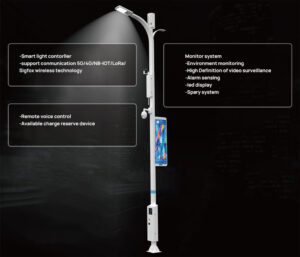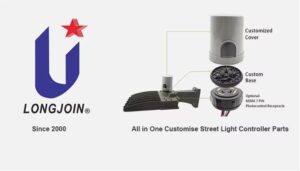Optimizing Power Factor for Maximum Photocell Efficiency
Introduction
In the light industry, reaching maximum efficiency is paramount for agencies in search to lessen power charges and limit environmental impact. One important issue of this optimization system is enhancing the power factor of lighting fixtures systems, in particular those utilizing photocells.
The power factor represents the ratio of real electricity to obvious energy in an electrical circuit. When the power factor is low, it indicates that an extensive part of the electric power supplied to the system is not being correctly utilized. In lighting fixtures packages, this inefficiency can cause wasted electricity and expanded operational charges.
By focusing on optimizing the power factor of lighting systems, businesses can enhance the efficiency of their photocell-controlled lighting setups. This involves employing diverse strategies together with power factor correction capacitors, adjusting the electric load, and selecting appropriate lighting fixtures.
In this guide, we’ll explore the significance of optimizing energy components for optimum photocell performance within the lighting industry. We’ll also talk about practical techniques and fine practices that businesses can enforce to enhance power factor, in the long run resulting in greater energy savings and sustainable lighting.
What Is Power Factor?

Essentially, power factor represents the cosine of the phase attitude between the voltage and modern waveforms in an alternating current (AC) circuit. It suggests the degree to which the weight (in this instance, lighting systems) completely utilizes the supplied electrical electricity.
In an AC circuit, voltage and current waveforms might not be flawlessly aligned due to the presence of reactive components like inductors and capacitors. Power factor quantifies this segment shift, ranging from 0 to 1, in which 1 indicates perfect alignment (cohesion energy aspect) and 0 suggests complete misalignment (reactive load).
Within the lighting fixtures industry, wherein energy performance is paramount, power factor performs an essential role. A low power factor means that a considerable portion of the supplied electric electricity is used to hold the magnetic or electric fields in reactive components rather than contributing to useful work, consisting of illuminating lamps.
Efficiency gains and cost financial savings are connected to power factor optimization. High power factor ensures that a greater share of the provided electricity is applied for actual illumination, lowering energy losses and improving normal machine efficiency. This translates to decreased application bills and reduced environmental effect.
How Does Power Factor Work In Photocell Efficiency?
Now, when it comes to photocells in lighting systems, power factor plays a significant role in determining how efficiently energy is being utilized. Lighting systems often include various electrical components like ballasts and transformers, which can introduce inductive loads. These loads can cause the current and voltage to become out of phase, resulting in a lower power factor.
Here’s the deal: when the power factor drops, the efficiency of the lighting system decreases too. Photocells, which are essentially light-sensitive switches that control when lights turn on and off, need a steady and efficient supply of power to function optimally. If the power factor is low, it means there’s wasted energy in the system, which can lead to increased energy costs and decreased overall efficiency.
To improve the efficiency of lighting systems with photocells, it’s essential to address power factor issues. This can be done through various methods, such as installing power factor correction capacitors or using power factor correction devices. These devices help to offset the reactive power in the system, bringing the power factor closer to 1 and improving overall efficiency.
How Power Factor Affects Energy Consumption In Lighting Systems

In the lighting industry, the power factor is a vital component that impacts energy intake in lighting systems. Power factor essentially measures how efficaciously electrical power is being utilized in a system. It’s a ratio of actual power (measured in watts) to apparent power (measured in volt-amperes), indicating how successfully electrical power is being converted into useful work.
When power factor is low, it indicates that the electric device is less competent in converting electricity into useful work. In lighting fixtures, a low power factor can lead to higher electricity consumption for the same quantity of lighting output. This is because a part of the electrical strength drawn from the grid is wasted because of reactive power, which does not make contributions to the actual lighting system output but requires to be provided and transmitted.
Low power factor not only results in better energy consumption however also puts stress on electrical infrastructure. It leads to accelerated currents in electric lines, transformers, and other components, which could result in overheating and premature failure. Additionally, utilities can also impose consequences on clients with constant low energy factor, as it calls for them to deliver more reactive electricity to atone for the inefficiencies within the system.
To mitigate the poor effects of low power factor, lighting systems may be designed or retrofitted to improve power factor. This is typically executed through the usage of power factor correction gadgets including capacitors. These devices help offset the reactive power factor, ensuing in a better overall power factor and advanced electricity performance.

By improving power factor, lighting structures can perform more competently, resulting to decreased energy consumption and lower electricity bills. Additionally, a higher power factor less pressure on electric infrastructure, resulting in improved reliability and decreased costs. Overall, optimizing power factor is vital for maximizing energy performance and minimizing operational expenses within the lighting industry.
Summary
In conclusion, achieving maximum photocell efficiency hinges on optimizing the power factor. By fine-tuning this critical aspect of electrical systems, you can significantly enhance the performance of photocells. A balanced power factor ensures optimal energy usage, leading to improved functionality and longevity of lighting systems. Through meticulous attention to power factor optimization, businesses can unlock the full potential of their photocell technology, resulting in enhanced energy efficiency and cost savings.
References
- https://en.wikipedia.org/wiki/Alternating_current
- https://c03.apogee.net/mvc/home/hes/land/el?utilityname=citizenselectric&spc=foe&id=4570
- https://en.wikipedia.org/wiki/Power_factor
- https://www.electricityforum.com/inductive-load
- https://www.electricaltechnology.org/2013/10/causes-of-low-power-factor.html





